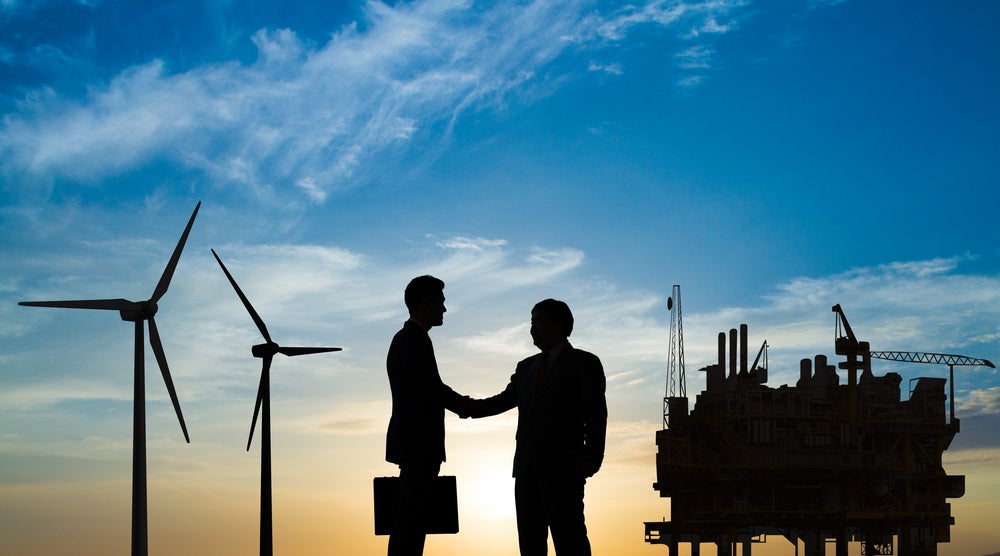
As the world’s appetite for energy skyrockets, offshore wind and oil and gas are in closer proximity than ever before in order to meet demand.
Wind energy has steadily expanded beyond onshore projects into marine spaces since the 1990s, a process that has forced the two industries to reckon with the challenges and opportunities of co-location.
Now, oil and gas operators are exploring the use of wind-generated energy to power offshore installations as well as sharing or repurposing compatible infrastructure with offshore wind operators. However, difficulties remain in both the equitable distribution of resources and regulatory complications.
Industry experts speak to Power Technology about the practicalities and future of co-location as the global energy transition gains pace.
By 2030, nearly 15% of the forecasted 4.8 petawatt-hours (PWh) of wind power capacity will be generated from offshore projects, according to Power Technology’s parent company GlobalData.
The momentum of offshore wind is being driven by technological advancements as developers achieve larger installations in deeper waters to tap higher (and often more consistent) wind speeds. The world’s deepest fixed-bottom wind turbine stands at a depth of 58.6m and is co-owned by SSE and TotalEnergies as part of the $3.7bn (£2.89bn) Seagreen project in Scotland, which came online in 2023.
Wind power is gaining more ground on hydrocarbon assets, with floating turbines mounted on anchored platforms. These operate in waters where conventional fixed-bottom turbines are impractical due to depth constraints and seabed conditions.
Offshore wind is currently led by power companies such as Iberdrola and NextEra Energy but oil and gas players are set to gain a sizeable share of the market over the next decade. GlobalData highlights that petroleum supermajor TotalEnergies will be the fourth-largest producer of wind energy globally by 2030, provided all of its proposed projects go online.
Norway’s Equinor, primarily a hydrocarbons producer, has also made serious moves into the offshore wind segment with plans to install a net capacity of 10–12GW by 2030. However, the company has been transparent about the financial challenges it faces in industrialising and monetising the technology, which it cited in 2024 after cancelling offshore wind projects in Spain, Mexico and Vietnam.
Then there is the return of US President Donald Trump, who has been suspending federal leases for offshore wind while approving oil and gas projects under his Unleashing American Energy agenda.


